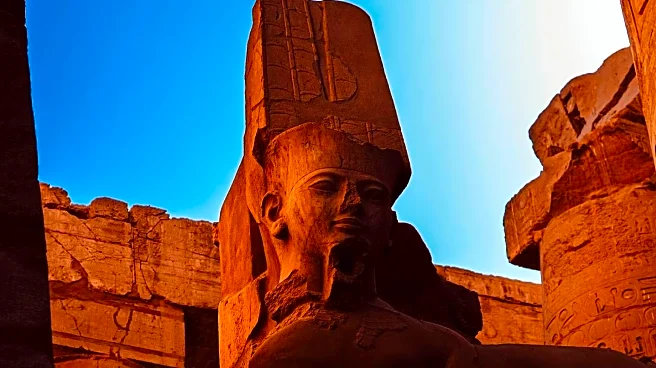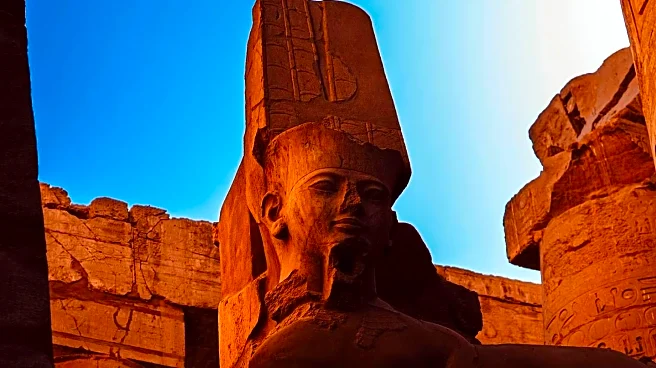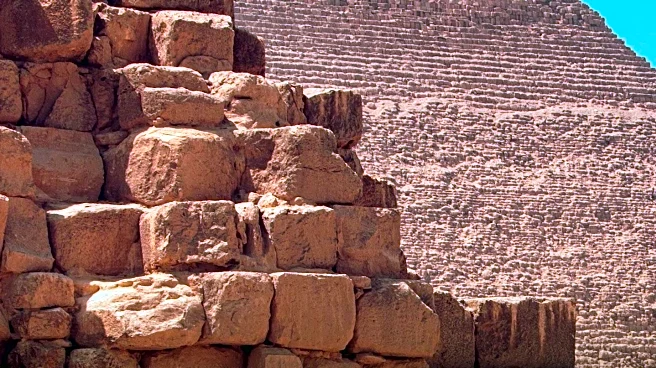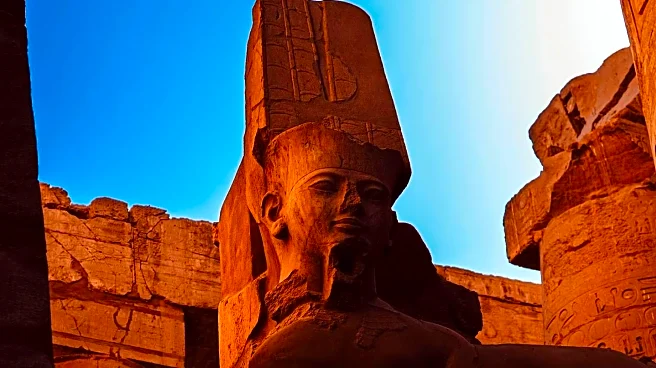What's Happening?
Egypt has reopened the tomb of Pharaoh Amenhotep III in Luxor's Valley of the Kings after more than 20 years of renovation. The tomb, discovered in 1799, had been looted, including the sarcophagus. The restoration, led by Japan, involved renovating paintings of the pharaoh and his wife on the tomb walls. The tomb features a main burial chamber and two chambers for his wives, Queens Tiye and Sitamun. The reopening is part of Egypt's efforts to attract more foreign visitors and revive its tourism sector, which has suffered since the 2011 political upheaval.
Why It's Important?
The reopening of Amenhotep III's tomb is crucial for Egypt's tourism industry, a key source of foreign currency. The sector has faced a downturn due to political instability and violence post-2011. By restoring and reopening historical sites, Egypt aims to draw international tourists and showcase its rich cultural heritage. The upcoming inauguration of the Grand Egyptian Museum is expected to further enhance Egypt's appeal as a tourist destination, potentially boosting economic growth.
What's Next?
The Grand Egyptian Museum near the Giza Pyramids is set to open on November 1, which is anticipated to attract global attention and visitors. Egypt's tourism authorities will likely continue promoting these cultural landmarks to increase visitor numbers and economic benefits. The successful reopening of Amenhotep III's tomb may lead to further restoration projects of other historical sites, contributing to the preservation of Egypt's cultural heritage.
Beyond the Headlines
The restoration of Amenhotep III's tomb highlights the importance of international collaboration in cultural preservation, with Japan playing a significant role in the project. This cooperation underscores the global effort to maintain and restore world heritage sites. The tomb's reopening may also spark increased interest in ancient Egyptian history and archaeology, potentially leading to new discoveries and insights into Egypt's past.












